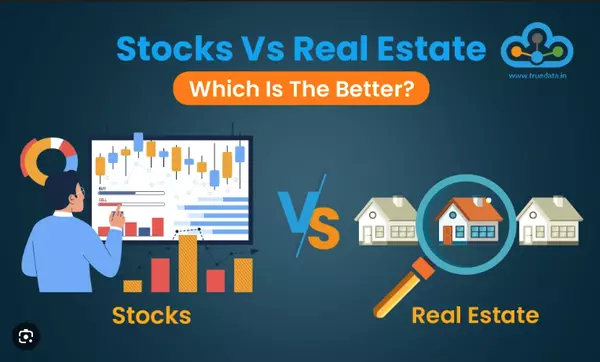How Macroeconomic Trends Shape Saskatoon’s Real Estate Market
Real estate isn’t just about location, location, location—it’s also about economics, economics, economics. From interest rates to migration patterns, macroeconomic trends play a huge role in shaping local housing markets. In this article, we’ll explore how national and global factors influence Saskatoon’s real estate market, and what it means for buyers, sellers, and investors. Let’s dive in!
Introduction: The Big Picture of Real Estate 🌍
When you think about real estate, you might picture houses, neighborhoods, and open houses. But behind the scenes, macroeconomic forces are quietly shaping the market. Whether it’s rising interest rates, skyrocketing home prices in Toronto, or the shift to remote work, these trends have a ripple effect on cities like Saskatoon. Understanding these forces can help you make smarter decisions, whether you’re buying, selling, or investing.
What Are Macroeconomic Trends? 📊
Defining Macroeconomics
Macroeconomics is the study of large-scale economic factors like interest rates, inflation, unemployment, and GDP. These factors influence everything from the cost of borrowing to consumer confidence—and, of course, real estate markets.
Key Macroeconomic Factors Affecting Real Estate
- Interest Rates: Set by the Bank of Canada, these determine the cost of borrowing.
- Housing Prices: Rising prices in one city can push buyers to more affordable markets.
- Migration Patterns: People move for jobs, affordability, and quality of life.
- Economic Shocks: Events like recessions or pandemics can disrupt markets.
How Interest Rates Impact Saskatoon’s Market 📈📉
The Role of the Bank of Canada
The Bank of Canada sets interest rates to control inflation and stabilize the economy. When rates rise, borrowing becomes more expensive; when they fall, it becomes cheaper.
Rising Rates: Cooling Expensive Markets, Heating Affordable Ones
- In cities like Toronto and Vancouver, rising rates can price buyers out of the market, reducing demand and cooling prices.
- In Saskatoon, however, although not common, it is possible for rising rates to increase demand as buyers seek more affordable options.
Falling Rates: Stimulating Demand Across the Board
- Lower rates make mortgages more affordable, boosting demand in all markets—including Saskatoon.
- However, the impact may be less dramatic in Saskatoon than in larger cities, where prices are already high.
Housing Prices in Expensive Markets: The Push to Saskatoon 🏠💰
Skyrocketing Prices in Toronto and Vancouver
- In March 2025, the benchmark home price in Toronto was $1,068,500, while in Vancouver it was $1,239,418.
- These sky-high prices make homeownership unattainable for many, pushing buyers to look elsewhere.
Saskatoon’s Affordability: A Magnet for Buyers
- With a current (March 2025) benchmark home price of $415,900, Saskatoon is a beacon of affordability.
- Even a 10% price increase in Saskatoon is still far more affordable than Toronto or Vancouver.
Migration Patterns: Why People Are Moving to Saskatoon 🚗✈️
Push Factors: Leaving Expensive Cities
- High Cost of Living: Rising housing costs, property taxes, and living expenses in cities like Toronto and Vancouver push residents to seek more affordable options.
- Remote Work Trends: The shift to remote work allows professionals to live anywhere, making affordable cities like Saskatoon more attractive.
- Quality of Life: Congestion, long commutes, and high stress in larger cities drive people to seek a slower pace of life.
Pull Factors: Choosing Saskatoon
- Affordability: Saskatoon’s lower housing costs and cost of living are a major draw.
- Strong Job Market: A diverse economy with opportunities in agriculture, mining, tech, and education.
- Quality of Life: Access to nature, parks, and a family-friendly environment.
Economic Shocks and Their Ripple Effects 💥
The Pandemic Effect: Remote Work and Urban Exodus
- The COVID-19 pandemic accelerated the shift to remote work, leading to an urban exodus as people sought more space and affordability.
- Saskatoon benefited from this trend, with increased demand from buyers relocating from larger cities.
Recessions and Inflation: Opportunities for Affordable Markets
- Economic downturns can lead to job losses and reduced demand, but they can also create opportunities for affordable markets like Saskatoon.
- For example, during the 2023 recession, Saskatoon saw an influx of buyers seeking stability and affordability.
Interconnected Markets: The Domino Effect 🎲
How Toronto and Vancouver Influence Saskatoon
- Real estate markets are interconnected. A slowdown in one city can create opportunities in another.
- For example, if Toronto’s market cools due to high prices and rising interest rates, buyers may turn to secondary markets like Saskatoon.
The Role of Secondary Markets in Real Estate
- Secondary markets like Saskatoon offer higher returns and lower risk compared to saturated markets like Toronto and Vancouver.
- Investors are increasingly turning to these markets for long-term growth.
Case Study: Saskatoon vs. Toronto (2025) 🏙️ vs. 🏙️
Comparing Home Prices, Interest Rates, and Quality of Life
|
Factor |
Toronto (March 2025) |
Saskatoon (March 2025) |
Impact on Saskatoon |
|
Benchmark Home Price |
$1.068 million |
$415,900 |
Saskatoon becomes a magnet for buyers priced out of Toronto. |
|
Interest Rates (BoC Benchmark) |
2.75% |
2.75% (same nationally) |
Interest rates being forecasted to drop increases demand nation-wide. |
|
Quality of Life |
Congested, high stress |
Laid-back, family-friendly |
Families and remote workers choose Saskatoon for a better lifestyle. |
What This Means for Saskatoon’s Future
- Saskatoon’s real estate market is poised for growth as buyers and investors seek affordability and quality of life.
- However, rising demand has been leading to higher prices, so timing is key.
Key Takeaways for Saskatoon’s Real Estate Market 🏡
- Affordability Drives Demand: Saskatoon’s lower housing costs attract buyers and investors from expensive markets.
- Interest Rates Shape Behavior: Holding rates that are projected to lower can drive demand when combined with other key drivers.
- Migration Patterns Matter: Push factors (high costs, congestion) and pull factors (affordability, quality of life) drive people to Saskatoon.
Conclusion: Navigating Saskatoon’s Dynamic Market 🚀
Saskatoon’s real estate market is shaped by national and global trends, from interest rates to migration patterns. By understanding these forces, you can make smarter decisions as a buyer, seller, or investor. Whether you’re looking for affordability, opportunity, or a better quality of life, Saskatoon has something to offer. Ready to explore the market? Let’s get started! Contact me today and I would be happy to help you with whatever stage you are in.
FAQs About Macroeconomic Trends and Saskatoon’s Real Estate ❓
1. How do rising interest rates affect Saskatoon’s real estate market?
Rising rates can cool demand in expensive markets like Toronto, pushing buyers to more affordable cities like Saskatoon. This can increase demand and drive up prices in Saskatoon.
2. Why are people moving from Toronto to Saskatoon?
People are moving to Saskatoon for its affordability, strong job market, and quality of life. High housing costs and congestion in Toronto are major push factors.
3. How does Saskatoon’s affordability compare to other Canadian cities?
Saskatoon is one of the most affordable cities in Canada, with a benchmark home price in March 2025 of $415,400, compared to over a million in both Toronto and Vancouver.
4. What role does remote work play in Saskatoon’s real estate market?
Remote work allows professionals to live anywhere, making affordable cities like Saskatoon more attractive. This trend has boosted demand for homes in Saskatoon.
5. How can economic shocks impact Saskatoon’s housing market?
Economic shocks like recessions or pandemics can increase demand for affordable markets like Saskatoon as buyers seek stability and lower costs.
Categories
Recent Posts










GET MORE INFORMATION

Agent
